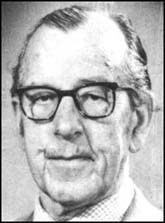Died 1984, United Kingdom Years of service 4 | Other work Civil Servant Name George Coppard | |
 | ||
Books With a Machine Gun to Cambrai: A Story of the First World War Battles and wars Battle of Loos, Battle of the Somme, Battle of Arras, Battle of Cambrai | ||
Kauertz engine built by george coppard with his own designed gearing system
Corporal George Alfred Coppard MM (1898–1984) was a British soldier who served with the Machine Gun Corps during World War I. Following his retirement he published his memoirs entitled With A Machine Gun to Cambrai in 1969.
Contents
- Kauertz engine built by george coppard with his own designed gearing system
- Early years
- World War I
- Later years
- References
Early years
George Coppard was born on 26 January 1898 and left school to work for a taxidermy firm at the age of 13.
World War I
Following the outbreak of War in 1914 he lied about his age and joined the 6th Battalion Royal West Surrey Regiment (now part of The Queen's Regiment). Having completed training in Guildford, the Battalion was posted to France in 1915, where they soon found themselves involved in the battle of Loos. At this stage Coppard had become a member of one of the machine gun teams. He fought in the front line almost continuously through the campaigns of 1916 and 1917 with the exception of a period of convalescence after he was accidentally shot by a colleague on 17 October 1916. This included most of the battle of the Somme (1916) and the battle of Arras (1917).
He was wounded again in October 1917 during the Battle of Cambrai and was nearly killed after his femoral artery was severed. His life was however saved by his colleagues, who quickly applied a tourniquet. By this time Coppard had been promoted to Corporal and awarded the Military Medal for gallantry before Cambrai.
Later years
With the armistice Coppard was discharged in 1919 and, following a period of unemployment, sought employment as an assistant steward at a golf club and thereafter in various sundry appointments. He retired in 1962 having worked at the Ministry of National Insurance since 1946.
He was married and had two daughters.
During retirement Coppard sought and received encouragement from the Imperial War Museum to have his wartime diaries published. Published in 1969, With a Machine Gun to Cambrai proved an instant success, prompting his contemporaries to publish their own wartime accounts.
